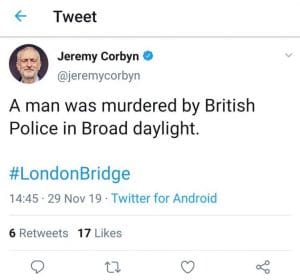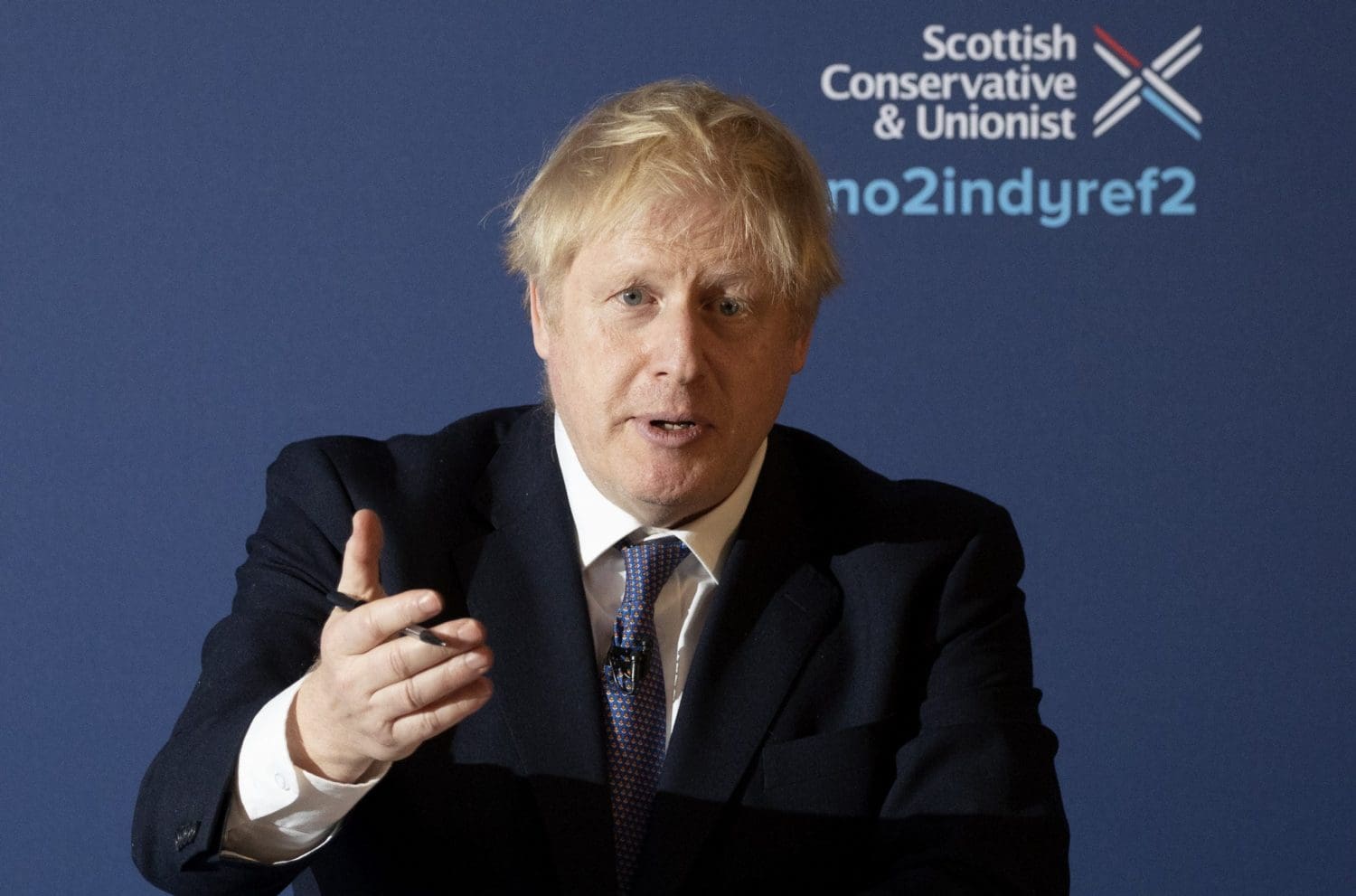Fake news and smears aimed at Labour leader Jeremy Corbyn are nothing new. However, it’s not just the usual tabloids that are guilty of this, newer technologies are playing their part.
These attacks are not only malicious but, more seriously, have the potential to encourage harm of any magnitude.
Fake ‘tweet’
On 29 November, a horrific knife attack took place on London Bridge. That saw two innocent people killed, three injured and a third, the suspect and who was previously jailed for terrorist offence, shot dead by the police.
Not long after, Corbyn tweeted this:
Shocking reports from London Bridge. My thoughts are with those caught up in the incident. Thank you to the police and emergency services who are responding.
— Jeremy Corbyn (@jeremycorbyn) November 29, 2019
This was followed by:
My response to yesterday's awful attack on London Bridge.
We must and we will stand together to reject hatred and division. pic.twitter.com/BUrI5ME6T8
— Jeremy Corbyn (@jeremycorbyn) November 30, 2019
However, this ‘tweet’ was also published via WhatsApp:

Except it’s a fake. And it’s not even a real tweet.
Although it seems some were fooled by it:
Wow
In a cab and very angry driver just said ‘look what Corbyn has tweeted about #LondonBridge attack’
He was sent this on a WhatsApp group. And it’s totally fake. Had to try and convince him to actually look at Twitter itself. He *still* isn’t sure #fakenews pic.twitter.com/PVKugjfKap
— James Longman (@JamesAALongman) November 29, 2019
Clues
The Corbyn’s actual Twitter timeline included no such tweet. Furthermore, the image displayed Arial regular font, which is not used by Twitter. And Corbyn never tweets from an Android.
But a certain amount of damage was already done:
Really hit home to me how effective this sort of fake information is – shared within hours of the incident itself to a large WhatsApp group
Even though he now knows it’s fake, the damage is done because it’s reinforced a perception he already had of Corbyn as an apologist
— James Longman (@JamesAALongman) November 29, 2019
Meanwhile, one Twitter user demonstrated how easy it can be to create a fake ‘tweet’:
sounds like work, try one of the fake tweet generator websites like https://t.co/x5cxU7mJqG pic.twitter.com/gIichQD64X
— Comrade Weez (@weezmgk) November 30, 2019
The context
One Twitter commentator responded by referring to fake activities by the Conservatives. Indeed, only recently, the party published a fake Labour website and re-branded its Tory Twitter account to masquerade as a ‘fact checker’:
Yep, the damage is done. This is the way politics works these days. I'm looking at you @CCHQPress. Make up a lie and even if you later apologise for it you've still put the idea into people's heads.
— Giles Ellis (@gillez1) November 29, 2019
Wider context
Smear attacks and attempts to undermine Corbyn have been relentless.
For example, in 2015, a British Army general claimed that Corbyn would face a mutiny should he attempt to end the Trident nuclear weapons system or withdraw the UK from NATO. A similar claim and threat were recycled in 2018. And In February of that year, the right-wing tabloids even claimed Corbyn was a Czech spy, although the allegations were easily shown to be groundless.
More recently, a former MI6 chief claimed Corbyn was a danger to national security.
BBC at fault
Misrepresentations can also be subtle. For example, in 2015, in the wake of terror attacks in Paris, BBC reporter Laura Kuenssberg asked Corbyn:
If you were prime minister, would you be happy to order people – police or military – to shoot to kill on Britain’s streets?
Corbyn replied:
I am not happy with a shoot to kill policy in general. I think that is quite dangerous and I think can often be counter-productive.
But when the interview was aired, Kuenssberg changed the emphasis of the question to:
if he [Corbyn] were the resident here at Number 10 whether or not he would be happy for British officers to pull the trigger in the event of a Paris-style attack
The BBC Trust found that the:
breach of due accuracy on such a highly contentious political issue meant that the output had not achieved due impartiality.
This was also covered by The Canary. The Keunssberg report, however, is still available on the BBC website and apparently trending:
https://twitter.com/DrStedx/status/1200531170154422272?s=20
Technology at play
In recent years it’s been getting more and more difficult to distinguish real news from fake news and outright smears. This is especially so, given the use of digital technologies to assist in the fraud.
In this particular instance fake news hit a new low, exploiting a terror attack to simply score a political point.
Sadly, we should expect that this kind of fake news is likely to remain a feature of our everyday life.
Featured image via screengrab
















